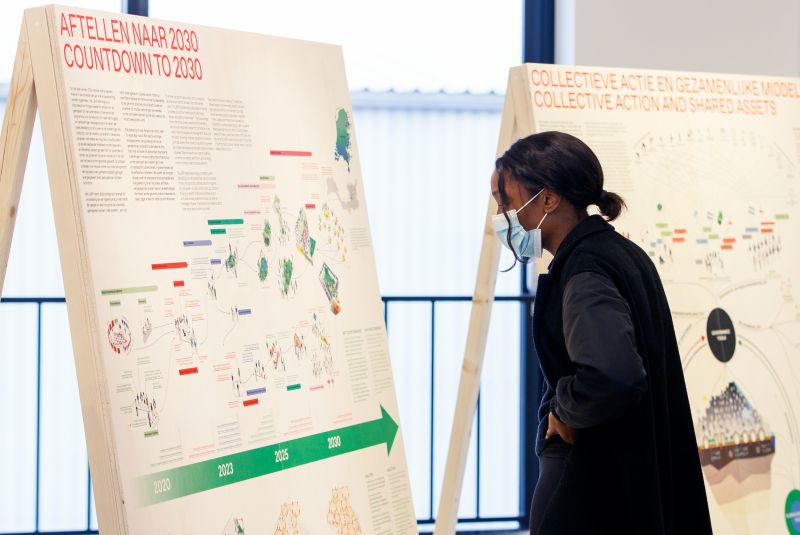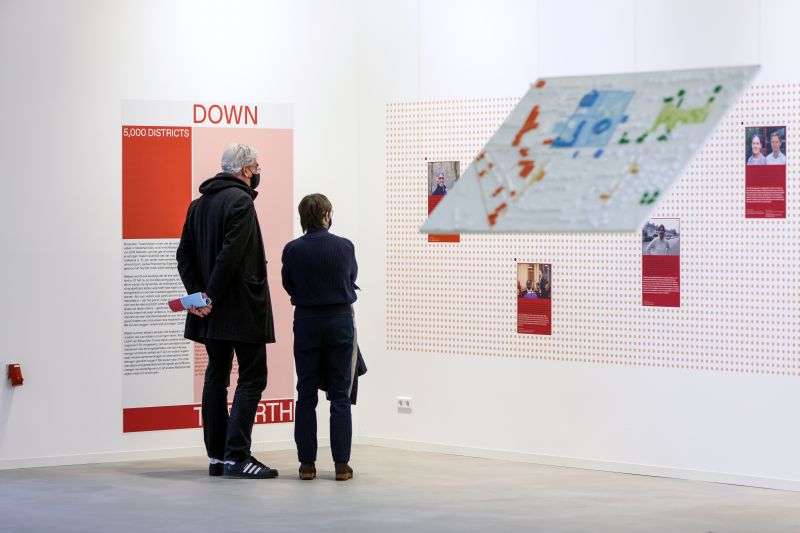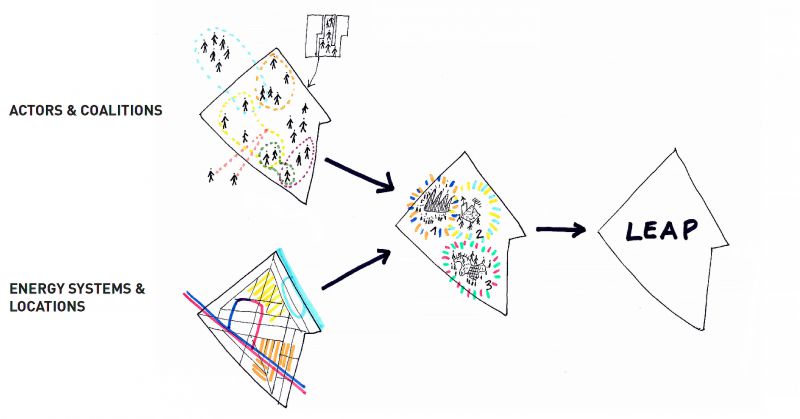EXHIBITION CLOSED DUE TO STRICTER LOCKDOWN MEASURES
WHOSE ENERGY IS IT, ANYWAY?, the second exhibition of the 9th edition of the IABR, DOWN TO EARTH, and scheduled from 20 November through 20 December 2020, is closed due to stricter lockdown measures.

WHOSE ENERGY IS IT, ANYWAY?
picture: Aad Hoogendoorn
WHOSE ENERGY IS IT, ANYWAY?
The exhibition DOWN TO EARTH: WHOSE ENERGY IS IT, ANYWAY? focuses on the energy transition at neighborhood level. On the energy district as an energetic district. Urgent issues converge at this scale level and large and small players –governments, companies, civil society and residents– must reach a new covenant. In and with the neighborhood, it is also possible to explore how the energy transition can be used as a lever for broader, comprehensive transformational change.

WHOSE ENERGY IS IT, ANYWAY?
picture: Aad Hoogendoorn
Urgent and far-reaching
The transition to renewable energy is urgent, but also almost unimaginably far-reaching.
Urgent because the petroculture that characterizes modern civilization contributes greatly to global warming and climate change. More than a million life forms have already become extinct or are threatened with extinction. For humans, too, the Earth is becoming less and less habitable.
Far-reaching because the way we live and care, learn and live, consume and produce; because what we eat and how we eat, how we move around and how we interact with each other and with nature – in short, because how we organize our living environment and our coexistence and whether everyone has equal opportunities, is largely determined by access to and use of energy.
Energy and culture
So, our use of and access to energy has an impact not only on our economy but also on our culture. What we’re now witnessing is the era of petroculture, the feast of fossil expressionism, coming to an end. That makes the energy transition the elephant in the room of politics. It is therefore crucial that we reconsider ownership of the transition to a sustainable energy supply. No energy transition without a transition in ownership.
Reclaiming the energy commons
Energy was once – and can again become, we believe – part of the commons: that which belongs to us all and that we take care of together. And why not, sun and wind, and soon hydrogen, belong to everyone, why not the energy that we can generate with them?
But how can this be achieved? How can citizens become the co-owners of a new energy system and what will that require? What is the relationship between the energy transition and a sustainable social agenda? How can we smartly link the energy system to the local economy?
Timely questions
These are timely questions to ask. In the Netherlands, according to the National Climate Agreement of 2019, circa 5,000 districts will have to become gas-free. Initial experience shows that this is not at all easy. There are many complications, for instance with implementation and, above all, financing and local support. Actually, we just don’t know yet how to wean our districts off of natural gas.

WHOSE ENERGY IS IT, ANYWAY?
picture: Aad Hoogendoorn
Building blocks and action plan
Also in Rotterdam, all districts have to be weaned off of natural gas. The city pointed to five to lead the way. One of these is Bospolder-Tussendijken, also known as BoTu, one of the poorest districts in the Netherlands. But it is not only fragile, it is also resilient: culturally diverse, empowered and self-aware. That is why the IABR chose BoTu.
Building on more than three years of research in the IABR–Atelier Rotterdam, the exhibition WHOSE ENERGY IS IT, ANYWAY? –curated by George Brugmans (IABR), Eva Pfannes (Ooze Architects and Urbanists) and Thijs van Spaandonk (Bright)– wants to contribute to finding answers to these timely questions. And because we have to walk the talk, we will not only present building blocks for future steps in the exhibition, but also the LEAP, the Local Energy Action Plan for Bospolder-Tussendijken that should lead to those next steps.

Towards a LEAP
© IABR, Ooze
For more information on the exhibition WHOSE ENERGY IS IT, ANYWAY?, click here
For all further visitor information, click here

picture: Melany van Twuijver
DOWN TO EARTH is a biennale in times of pandemic – an anti-biennale. Instead of compressing a multitude of activities – concentrating them in time and place, inviting as many people as possible, from far and wide, through the same door – we will unfold the program over time. A biennale true to form is simply not possible under the current atypical circumstances.
From September 2020 until the summer of 2021, the IABR will present a series of relatively small exhibitions and other activities. We will also find safe ways to organise a limited number of events, such as work sessions and lectures.
Read the introduction to DOWN TO EARTH by the chief curator, George Brugmans, here
Because of the pandemic, all dates are subject to change. So, check our website and agenda regularly, subscribe to our newsletter and follow us on twitter and instagram
Crucially however, make sure to stay healthy and safe!